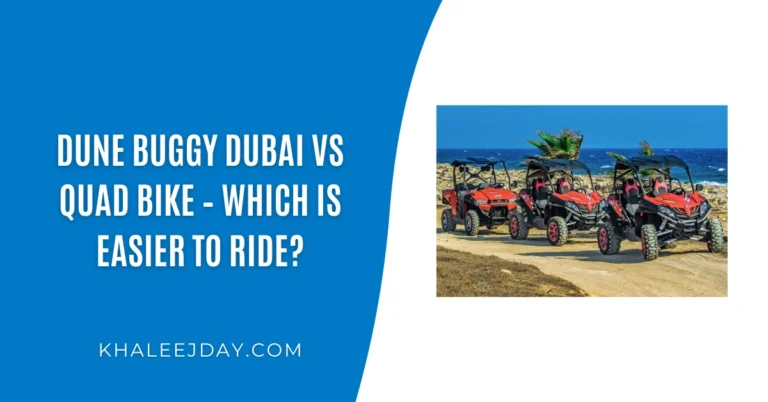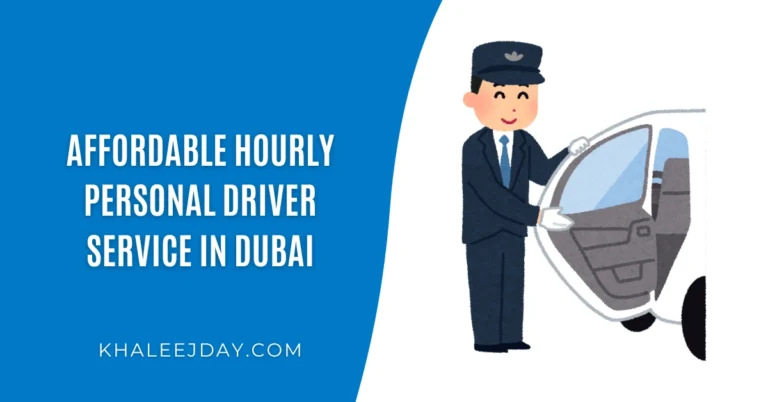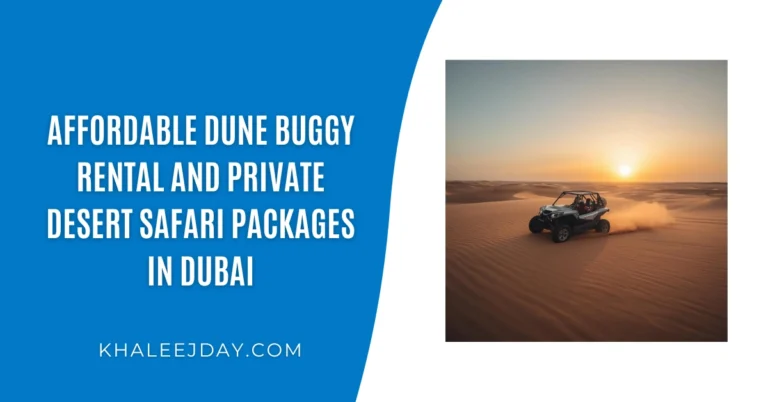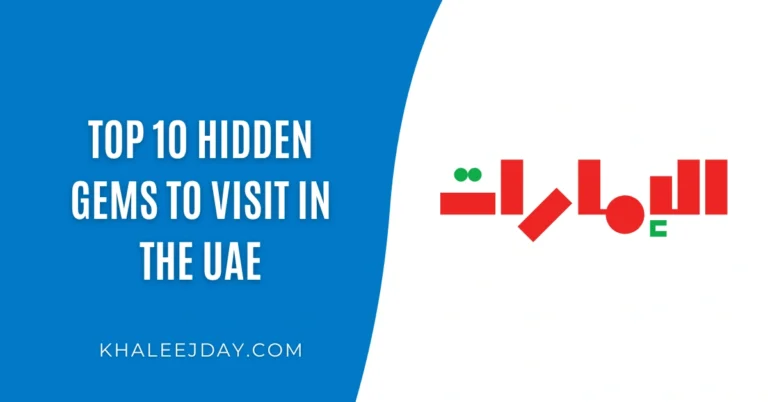Complete Guide to Transportation in Dubai: Your Ultimate Travel Companion
Dubai stands as one of the world’s most accessible and well-connected cities, offering visitors multiple convenient ways to arrive and explore this magnificent emirate. Whether you’re planning your first visit or looking to navigate the city more efficiently, this comprehensive guide covers everything you need to know about getting to and around Dubai.
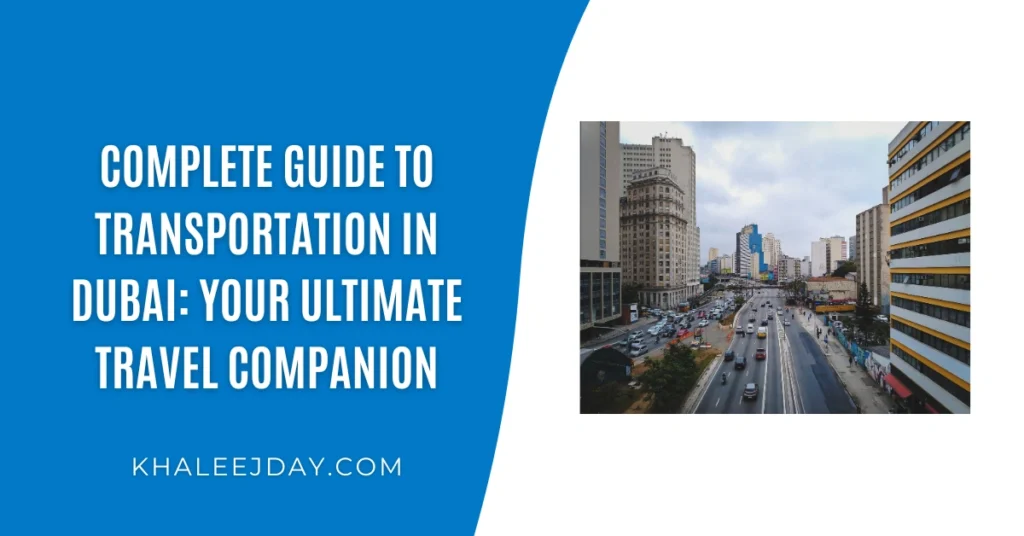
Getting to Dubai: Multiple Gateway Options
Arriving by Air: World-Class Airport Infrastructure
Dubai’s aviation infrastructure is nothing short of spectacular, featuring two major international airports that serve millions of passengers annually. The city’s commitment to being a global travel hub is evident in its state-of-the-art facilities and extensive flight connections.
Dubai International Airport (DXB)
Dubai International Airport has earned its reputation as the world’s busiest international airport, serving as the primary gateway to the emirate since the 1960s. This massive facility handles thousands of international flights weekly, connecting Dubai to virtually every corner of the globe. The airport’s strategic location makes it an ideal stopover point for travelers journeying between Europe, Asia, Africa, and Australia.
The airport features multiple terminals equipped with world-class amenities, duty-free shopping, restaurants, and comfortable lounges. Ground transportation from DXB is seamless, with direct metro connections, taxi services, and bus routes ensuring you can reach any part of Dubai quickly and efficiently.
Al Maktoum International Airport (DWC)
Located in the ambitious Dubai South development, Al Maktoum International Airport represents the future of aviation in Dubai. Currently serving several airlines, particularly low-cost carriers, this airport is undergoing massive expansion as part of a strategic plan announced in 2024.
Upon completion, DWC will become the world’s largest airport, spanning an area five times larger than DXB and capable of handling 260 million passengers annually. The Dubai South development surrounding the airport will cover 6.7 million square kilometers, incorporating residential areas, commercial districts, leisure facilities, and retail complexes.
Arriving by Land: Regional Road Connections
While most international visitors arrive by air, Dubai’s excellent road infrastructure makes it easily accessible from neighboring countries. The United Arab Emirates shares borders with Saudi Arabia and Oman, creating opportunities for overland travel and regional exploration.
Border Crossings and Requirements
Citizens of Gulf Cooperation Council countries enjoy simplified border procedures when traveling between member states by road. The most frequently used border crossings include Hatta and Al Ain, both offering scenic routes through the Hajar Mountains and access to adventure tourism opportunities.
International visitors from non-GCC countries should research visa requirements and entry restrictions before attempting to enter the UAE by land. Planning ahead ensures a smooth border crossing experience and prevents unexpected delays or complications.
Popular Overland Routes
The highway system connecting Dubai to neighboring countries is modern and well-maintained. Road trips from Saudi Arabia or Oman offer travelers the opportunity to experience the diverse landscapes of the Arabian Peninsula, from desert vistas to mountain ranges.
Arriving by Sea: Luxury Cruise Terminals
Dubai’s maritime heritage continues to thrive through its world-class cruise facilities. The city has invested heavily in cruise infrastructure, making it a premier destination for luxury cruise lines and their passengers.
Major Cruise Terminals
| Terminal | Location | Features |
| Dubai Cruise Terminal | Mina Rashid | Historic port area, shuttle services to Dubai Mall |
| Dubai Harbour | Dubai Marina | Modern facilities, close to beaches and dining |
Both terminals offer comprehensive services including tour operators, transportation to major attractions, dining facilities, shopping areas, comfortable seating, and complimentary WiFi access. The strategic locations of these terminals provide excellent starting points for exploring Dubai’s diverse neighborhoods and attractions.
Inter-Emirate Transportation: Connecting the UAE
The United Arab Emirates features an efficient transportation network that makes traveling between emirates straightforward and convenient. Dubai’s central location within the country provides easy access to all six other emirates through modern highways and regular bus services.
Major Highway Connections
From Abu Dhabi
The capital city connects to Dubai via the E11 highway, known within Dubai as Sheikh Zayed Road. This 140-kilometer journey typically takes up to two hours, depending on traffic conditions. The route offers scenic views of the desert landscape and passes through several smaller communities.
From Al Ain, Abu Dhabi’s second-largest city, travelers can use highway E66 for a direct route to Dubai. This approximately 150-kilometer journey takes around two hours and provides access to some of the UAE’s most beautiful desert and mountain scenery.
From Sharjah
As Dubai’s closest northern neighbor, Sharjah offers multiple route options. The most efficient highways are typically E311 or E611, which bypass congested city center areas. While E11 provides an alternative route, it often experiences heavy traffic. Travel time between Sharjah and Dubai ranges from 20 to 30 minutes under normal conditions, though traffic can extend this significantly.
From Northern Emirates
The emirates of Ajman, Umm Al Quwain, and Ras Al Khaimah connect to Dubai primarily through highways E611 or E311. These routes provide efficient access while avoiding the most congested areas.
From Fujairah
Travelers from the east coast emirate of Fujairah can reach Dubai via highway E84, then E102, which connects to E611 near Dubai. This route showcases the UAE’s diverse geography, from coastal areas to inland desert regions.
Inter-Emirate Bus Services
Dubai’s Roads and Transport Authority operates comprehensive bus services connecting all emirates. These affordable services provide a cost-effective alternative to private transportation.
Complete Bus Route Directory
| Route | Origin | Destination | Fare |
| E100 | Abu Dhabi Central Bus Station | Al Ghubaiba Bus Station | AED 25 |
| E101 | Abu Dhabi Central Bus Station | Ibn Battuta Bus Station | AED 25 |
| E102 | Musaffah Community Bus Station | Al Jafiliya Bus Station | AED 25 |
| E201 | Al Ain Bus Station | Al Ghubaiba Bus Station | AED 25 |
| E303 | Al Jubail Bus Station (Sharjah) | Union Square Bus Station | AED 25 |
| E306 | Al Jubail Bus Station (Sharjah) | Al Ghubaiba Bus Station | AED 25 |
| E307 | Al Jubail Bus Station (Sharjah) | City Centre Deira | AED 25 |
| E400 | Ajman Bus Station | Union Square Bus Station | AED 25 |
| E411 | Ajman Bus Station | Etisalat Metro Station | AED 25 |
| E700 | Fujairah Bus Station | Union Square Bus Station | AED 25 |
All inter-emirate bus services maintain the same affordable fare of AED 25 per person for one-way travel, making them an excellent budget-friendly option for exploring the UAE.
Navigating Dubai: Comprehensive Public Transportation
Dubai has developed one of the world’s most modern and efficient public transportation systems. The integrated network includes metro trains, trams, buses, and marine transport services, all designed to provide seamless connectivity throughout the city.
The Nol Card System: Your Key to Dubai Transport
The foundation of Dubai’s public transportation system is the nol card, a contactless payment solution similar to London’s Oyster card or Hong Kong’s Octopus card. This rechargeable smart card provides access to virtually all forms of public transport in Dubai.
Nol Card Types and Features
| Card Type | Target Users | Benefits | Special Features |
| Gold | Premium travelers | Higher comfort levels | Access to Gold class compartments |
| Silver | General public | Standard fares | Most popular choice for tourists |
| Blue | Students, seniors, people of determination | Discounted fares | Requires eligibility verification |
Purchasing and Using Nol Cards
Nol cards are widely available throughout Dubai, making them easily accessible for all travelers. Purchase locations include all Dubai Metro stations, most bus stations, and major supermarkets such as Carrefour, Spinneys, and Waitrose.
Each person in your travel group requires an individual nol card. The cards operate on a simple tap-in, tap-out system for all public transportation modes. Additionally, nol cards can be used to pay for RTA parking spaces throughout the city.
Card Balance and Top-Up Options
- Minimum balance: AED 7.50
- Maximum balance: AED 1,000 (unregistered cards)
- Maximum balance: AED 5,000 (registered cards)
- Top-up locations: Metro stations, bus stations, online platforms
Dubai Metro: The Backbone of Public Transport
The Dubai Metro stands as one of the world’s most impressive urban rail systems. As the largest fully automated driverless train network globally, it combines cutting-edge technology with passenger comfort and convenience.
Metro Line Overview
| Line | Coverage | Key Destinations |
| Red Line | Airport to Jebel Ali | DXB Airport, Downtown Dubai, Dubai Marina |
| Green Line | Al Qusais to Creek | Deira, Bur Dubai, Dubai Healthcare City |
The Red Line serves as the main arterial route, connecting Dubai International Airport with the city’s most popular destinations, including Downtown Dubai, Dubai Marina, and various shopping centers. The Green Line provides excellent coverage of Dubai’s historic areas and business districts.
Metro Benefits and Features
- Fully air-conditioned carriages for year-round comfort
- Clean, modern stations with accessibility features
- Affordable fares with nol card integration
- Frequent service throughout operating hours
- Direct airport connectivity
- Safe and secure travel environment
Dubai Tram: Coastal Area Connectivity
The Dubai Tram system focuses on serving the Dubai Marina area and Al Sufouh Road corridor. This modern tram network provides essential connectivity between the Dubai Metro system and coastal attractions, including the iconic Palm Jumeirah via its monorail connection.
The tram system integrates seamlessly with the broader public transport network, accepting nol card payments and providing smooth transfers to metro and bus services. The route passes through some of Dubai’s most scenic areas, offering passengers views of the coastline and modern architectural developments.
Dubai Bus Network: Comprehensive City Coverage
Dubai’s extensive bus network operates 24 hours a day, providing comprehensive coverage to every major neighborhood and attraction in the city. With routes intersecting all significant areas and buses departing as frequently as every 30 minutes on popular routes, the bus system offers an affordable way to explore Dubai.
Bus System Highlights
- Coverage: All airport terminals and major neighborhoods
- Operating hours: 24/7 service
- Frequency: Every 30 minutes on major routes
- Payment: Exclusively nol card (cash not accepted)
- Accessibility: Wheelchair-accessible buses available
- Route information: Comprehensive mapping and real-time updates
The bus network particularly excels at connecting areas not directly served by the metro system, ensuring that even the most remote attractions remain accessible via public transport.
Marine Transportation: Dubai’s Nautical Heritage
Dubai’s origins as a maritime trading center continue to influence its transportation options. The city offers various water-based transport services that provide both practical transportation and unique sightseeing opportunities.
Traditional Abra Crossings
The traditional wooden abra boats crossing Dubai Creek represent one of the city’s most authentic and affordable transportation experiences. For just AED 1, passengers can cross the historic waterway while experiencing a mode of transport that has remained largely unchanged for decades.
Modern Water Services
| Service | Route | Purpose |
| Water Taxi | Various coastal points | Point-to-point transport |
| Dubai Ferry | Coastal neighborhoods | Sightseeing and transport |
| Luxury Yacht Rentals | Customized routes | Events and leisure |
The RTA operates modern water taxis and ferry services that allow visitors to explore Dubai’s coastline while traveling between neighborhoods such as Jumeirah and Dubai Marina. These services combine practical transportation with scenic touring opportunities.
Palm Monorail: Unique Island Access
The Palm Monorail represents Dubai’s only public transport system that operates independently of the nol card network. This specialized service runs along Palm Jumeirah from Al Sufouh Road to Atlantis, The Palm resort.
The monorail provides essential connectivity to Palm Jumeirah’s attractions, hotels, and residential areas. Stops include major resorts and entertainment venues, making it indispensable for visitors exploring this iconic artificial island.
Private Transportation Options
Taxi Services: Convenient Door-to-Door Travel
Dubai’s taxi network, operated by the RTA along with licensed ride-hailing services, provides comprehensive coverage throughout the city. Official taxis are easily identifiable and maintain consistent pricing standards.
Taxi Fare Structure and Availability
- Airport taxis: Starting from AED 25 (approximately $6.80)
- Availability: 24/7 service throughout the city
- Booking options: Street hailing, phone booking, mobile apps
- Payment methods: Cash, nol card, credit cards
Ride-Hailing Services
Popular ride-hailing applications including Careem and Uber operate throughout Dubai, providing additional convenience and often competitive pricing. These services offer various vehicle categories to suit different needs and budgets.
Car Rental Services: Independent Exploration
Car rental provides maximum flexibility for exploring Dubai and the broader UAE. Multiple rental companies operate from airports, shopping centers, hotels, and standalone locations throughout the city.
Rental Requirements and Considerations
- License requirements: International driving license or permits from eligible regions
- Availability: Airport locations, shopping malls, hotels, online booking
- Short-term options: Udrive and eKar for hourly rentals
- Traffic laws: Familiarization with local regulations essential
- Parking: Various paid and free options throughout the city
Rental Options Overview
| Service Type | Best For | Key Features |
| Traditional Rental | Multi-day use | Wide vehicle selection, competitive rates |
| Short-term Rental | Hourly needs | App-based, convenient pickup locations |
| Luxury Rental | Special occasions | Premium vehicles, concierge services |
Sustainable Transportation: Bikes and Scooters
Dubai has embraced sustainable transportation options, with expanding infrastructure for bicycles and electric scooters. These options provide healthy, environmentally friendly ways to explore the city while offering unique perspectives on urban and desert landscapes.
Bicycle Infrastructure and Services
The city continues expanding its network of dedicated bike paths, particularly in tourist-friendly areas such as Downtown Dubai and Dubai Marina. Several companies provide bicycle rental services:
- Nextbike: Widespread availability, multiple pickup points
- Byky: Focus on tourist areas and attractions
- Trek Bikes: Premium bicycles for serious cyclists
- Careem BIKE: Large-scale bike-sharing initiative with RTA partnership
Electric Scooter Services
Motorized scooters and e-scooters have gained popularity in various neighborhoods, offering convenient short-distance transportation. Popular areas include Sheikh Mohammed bin Rashid Boulevard in Downtown Dubai, Jumeirah Lakes Towers, and Dubai Internet City.
Licensed Scooter Operators
- Careem: Integrated with ride-hailing app
- Tier: European operator with local presence
- Skurtt: Regional focus and local expertise
- Arnab: Dubai-based service
- Lime: International operator with local operations
All operators provide smartphone apps available on major app stores, making scooter access convenient and user-friendly.
Dubai’s Diverse Neighborhoods: Where to Explore
Dubai’s efficient transportation system provides easy access to the city’s diverse neighborhoods, each offering unique attractions, dining, shopping, and cultural experiences. Understanding these areas helps visitors plan their transportation routes and exploration strategies.
Central Dubai Districts
Downtown Dubai
The heart of modern Dubai, featuring the Burj Khalifa, Dubai Mall, and Dubai Fountain. Excellent metro connectivity via the Red Line makes this area easily accessible from anywhere in the city.
Dubai Marina
A waterfront community with high-rise buildings, beaches, restaurants, and nightlife. Served by both metro and tram systems, with excellent connectivity to other coastal areas.
Jumeirah
Dubai’s prestigious beachfront district, known for luxury hotels, beaches, and upscale shopping. Accessible via bus services and taxis, with some areas walkable from tram stations.
Traditional Dubai Areas
Deira
Historic trading district featuring traditional souks, heritage sites, and authentic dining experiences. Well-served by the Green Line metro and numerous bus routes.
Bur Dubai
Another historic area with museums, traditional architecture, and cultural attractions. Excellent public transport connectivity including metro and bus services.
Modern Business Districts
Business Bay
Contemporary business and residential district with modern architecture and dining options. Direct metro access via the Red Line.
Dubai International Financial Centre (DIFC)
Premium business district with upscale restaurants, art galleries, and cultural events. Metro accessible with short walking distances to most attractions.
Practical Tips for Transportation Success
Planning Your Journey
- Download the RTA Dubai app for real-time information
- Study metro and bus maps before traveling
- Allow extra time during peak hours (7-9 AM, 6-8 PM)
- Consider traffic patterns when choosing transportation modes
- Keep nol cards topped up to avoid delays
Cultural Considerations
- Respect local customs, particularly regarding dress codes
- Friday morning services may have modified schedules
- Ramadan periods may affect operating hours
- Women-only sections available on metro and some buses
Safety and Security
- All public transport maintains high security standards
- CCTV monitoring throughout the system
- Emergency communication systems in all vehicles and stations
- Well-lit stations and stops for night travel safety
Cost-Effective Strategies
- Nol cards offer better rates than individual tickets
- Bus transport provides the most economical option
- Consider day passes for extensive travel
- Group travel can make taxis cost-competitive with public transport
Conclusion: Mastering Dubai’s Transportation Network
Dubai’s transportation system represents one of the world’s most comprehensive and user-friendly urban mobility networks. From the moment you arrive at one of the city’s world-class airports to exploring the diverse neighborhoods and attractions, multiple transportation options ensure convenient, comfortable, and affordable travel throughout the emirate.
The integration of traditional and modern transport modes, from historic abra boats to cutting-edge driverless metro trains, reflects Dubai’s commitment to honoring its heritage while embracing innovation. Whether you prefer the convenience of taxis, the affordability of public transport, the flexibility of car rentals, or the sustainability of bicycles and scooters, Dubai provides options to suit every travel style and budget.
Understanding and utilizing Dubai’s transportation network enhances your experience of this remarkable city, providing access to its world-class attractions, diverse neighborhoods, beautiful beaches, historic sites, and modern marvels. With proper planning and knowledge of the available options, navigating Dubai becomes not just manageable, but an integral part of the adventure itself.


